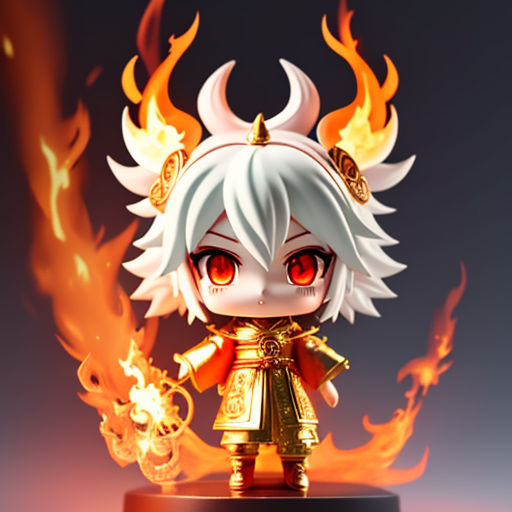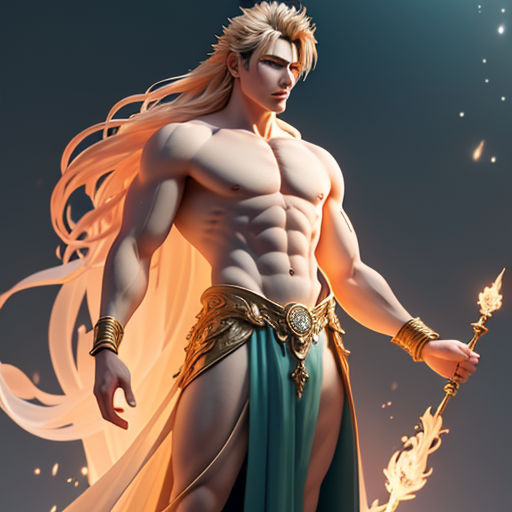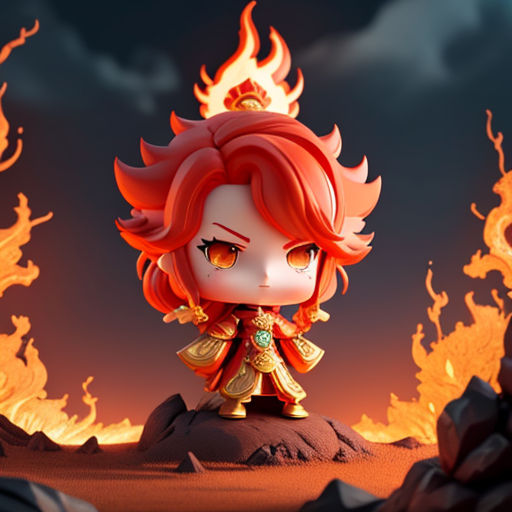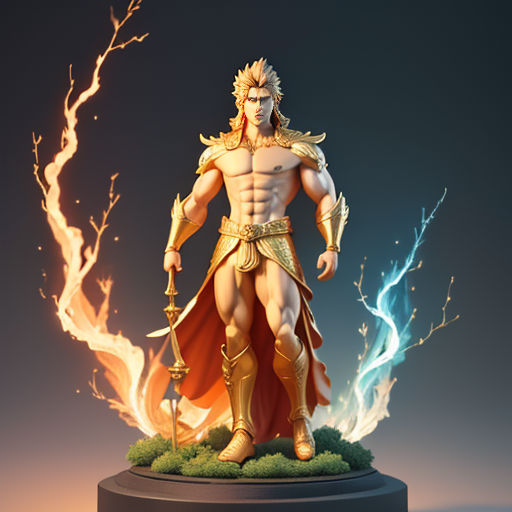
The Fiery Wrath of the Fire God
By Storybird

03 Aug, 2023

Long, long ago, in a mystical land, lived a mighty god known as Ignis, the god of fire. Known for his uncontrollable anger and fierce power, he was both revered and feared by other gods and mortal beings. His name was spoken in hushed whispers for fear of invoking his wrath.

Ignis resided high atop Mount Vesta, amidst pools of molten lava and plumes of smoke. His dwelling was as fierce as his nature – decorated with burning embers and lit by a perpetual flame, the reflection of his raging soul.

A divine being, Ignis was born of the old Titans, primordial beings of immense power. His mother, Terra, the goddess of the Earth, had bestowed upon him strength and resilience, while his father, Sky, granted him a volatile yet majestic essence.

As the god of fire, Ignis controlled all aspects of this element. He could summon and quench flames at will, but he rarely used his power for gentleness; his anger-induced firestorms were a sign of his fury.

Despite his fiery temper, Ignis held a deep affinity for all creation. His fires brought warmth, allowing life to thrive during the harsh winters. But alas, his explosive anger often overshadowed his benevolent nature.

Among the gods, Ignis had a rivalry with Aquos, the god of water. They were opposite in nature, and clashes were inevitable. Aquos, quiet and calm, would often attempt to quell Ignis' fiery temper, causing further irritation.

During one such disagreement, Ignis' fury grew so strong that he set the world ablaze, causing destruction and chaos. His wrathful firestorm swept across forests and villages, leaving a trail of devastation behind.

Seeing the world under threat, Aquos intervened. Using his mighty trident, he summoned the seas and the rains. The sky wept, and the ground trembled as crashing waves and torrential downpours quenched Ignis' flames.

However, the clash between Fire and Water had already wreaked havoc on Earth. The once lush landscapes were charred, and life was struggling to survive. The other gods, alarmed by the destruction, held a council to decide Ignis' fate.

Terra, Ignis' Mother Earth, beseeched the gods to show mercy. She reminded them of Ignis' benevolence, of the warmth and life his flames brought. Yet, the recollection of the recent destruction was too fresh; mercy was not easily granted.

The council decided that Ignis' anger must be controlled. Aulus, the god of wind, suggested trapping Ignis' fury within a stone. The sacred stone, named Pyra, was created by the old Titans, capable of containing even the most potent divine energy.

Unhappy but resigned, Ignis conceded to the council's judgement. He allowed his explosive fury to be drawn into the Pyra, sealing it within the stone. With this act, Ignis' anger was contained, and his destructive propensity was curbed.

From that day on, Ignis changed. He was no longer the fury-driven deity but a composed and serene figure. He retained his dominion over flame but used his powers more wisely, creating a balance between destruction and creation.

The Pyra stone, a symbol of Ignis' capitulation and transformation, was placed in the center of the world. It served as a reminder of the destructive power of uncontrolled anger and the importance of balance and harmony.

Over time, Ignis learned to control his temper, mediating his energy through the Pyra stone. He still had his moments of anger, but they were milder, their fiery aftermath controlled and less destructive. His story became a lesson for all - gods and mortals alike.

The myth of Ignis, the angry fire god, has echoed through centuries, teaching the importance of temper control and wise use of power. Even today, the Pyra stone is revered, embodying the essence of balance and the consequence of unbridled anger.

The tale of Ignis serves as a constant reminder not only to the gods abiding in celestial realms, but also to the mortals on Earth. Even the mightiest of beings are not invincible, and their actions, no matter how well intended, can lead to huge consequences.

Striking the delicate balance between creation and destruction, Ignis had found an equilibrium. He had learned to temper his anger and use his powers for the benefit of all. The once feared god, was now respected and loved.

And so, the fire god Ignis, in learning to control his anger, had changed the course of life. His tale passed down through generations, as a testament to the power of learning, change, and the triumph of balance over chaos.

In the end, Ignis had become the symbol of transformation - from an angry god to a wise deity. His burning rage, once a threat to existence, had become the source of warmth and life. Thus, the tale of Ignis, the once-angry fire god, became a legend.

From the ashes of catastrophe, the world had risen anew, stronger and wiser. And at the heart of it all was Ignis, the fiery god, tamed not by force, but by acceptance and understanding. His story, a beacon of hope and resilience, continued to inspire gods and mortals alike.

Ignis, the god of fire, once known for his uncontrollable anger, had finally found peace. His mighty roar replaced by a calming warmth, he continued to watch over the world, a symbol of power and wisdom. His tale unforgotten, his spirit unbroken.

And so, the story of Ignis, the angry fire god, lives on - a testament to the potency of change, the value of harmony, and the force of tempered power. Even when led by wrath, even the mightiest can be altered by understanding and acceptance.

Ignis, the once wrathful god of fire, had become a beacon of hope and resilience. His tale of transformation, resilience, and balance serves as a lesson for all - gods and mortals alike. In his fiery spirit, we find the courage to change, the strength to endure, and the wisdom to choose peace over chaos.

The tale of Ignis reminds us of the power each of us holds, the consequences of uncontrolled anger, and the importance of balance. It is a timeless tale, teaching us to harness our passions for good, to bring warmth instead of destruction. And most importantly, it teaches us that even the unstoppable flame can learn to burn gently.